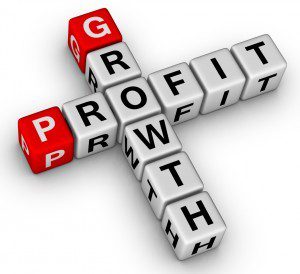 We previously introduced the concept of the ‘Business Value Gap’ to help in assessing the difference between the value of a business today and what it needs to be at the time of sale. Now UHY Haines Norton’s Business Valuations specialist Kerry Tizard presents a case study showing the Business Value Gap in action.
We previously introduced the concept of the ‘Business Value Gap’ to help in assessing the difference between the value of a business today and what it needs to be at the time of sale. Now UHY Haines Norton’s Business Valuations specialist Kerry Tizard presents a case study showing the Business Value Gap in action.
I recently worked with a client, “David” (53), owner/operator of a successful business providing professional services to the building and construction industry. David had started thinking about retiring and believed all it would take is not getting out of bed in the morning to go to work. Until he spoke to me, David was looking forward to retirement.
David was planning to sell his business to fund part of his retirement. He didn’t realise how the shortfall in his business value affected his future lifestyle. Based on his retirement plans, David’s financial adviser had estimated he would need $1.25 million in retirement assets at age 60 to fund his lifestyle in retirement. His projected income earning retirement assets were calculated as $575,000 – resulting in a shortfall of $650,000, far exceeding the current value of his business.
If David did nothing he would face:
- Accepting a lower standard of living at retirement
- Continuing working well past his desired retirement date
This case study highlights how the value of a business affects an owner’s future standard of living and how succession planning can be used to grow and realise business wealth to fund the shortfall.
Client’s Needs
- Value gap $650,000
- No formal succession plan
Issues
- David is the business’ key “revenue earner” with his existing staff supporting his activities
- There was a young qualified professional working in the business but he moved on to gain more experience and build his career
- David has always rejected merger talks with like businesses for fear of losing control of his business
Actions To Resolve
David’s first step was to complete a Business Value Gap analysis. This identified his value needed at sale, value gap and future profit target.
The analysis showed he could close his Value Gap if he was able to increase his business profit ($50,000 in the first year). David was confident that with help from his advisers he would be able to achieve this.
Once David had identified his future profit target, he implemented procedures to grow income and improve job profitability. David’s growth strategies included purchasing a new job costing system to accurately record job income and expenses. He also segmented his clients to focus on more profitable work and has identified some niche marketing opportunities. He has fewer clients but is making more money.
David’s succession strategy included joining a network of similar businesses to share training and professional development costs and selected administration functions. Sharing costs and functions with similar businesses is one way of retaining control but identifying “like minded” business owners. They may be the future buyer of his business.
 UHY Haines Norton Director Kerry Tizard works with business owners across all industries to help optimise their business profitability for growth or sale. To find out more about how we can help, please contact Kerry on (09) 839-0300 or email kerryt@uhyhn.co.nz.
UHY Haines Norton Director Kerry Tizard works with business owners across all industries to help optimise their business profitability for growth or sale. To find out more about how we can help, please contact Kerry on (09) 839-0300 or email kerryt@uhyhn.co.nz.
